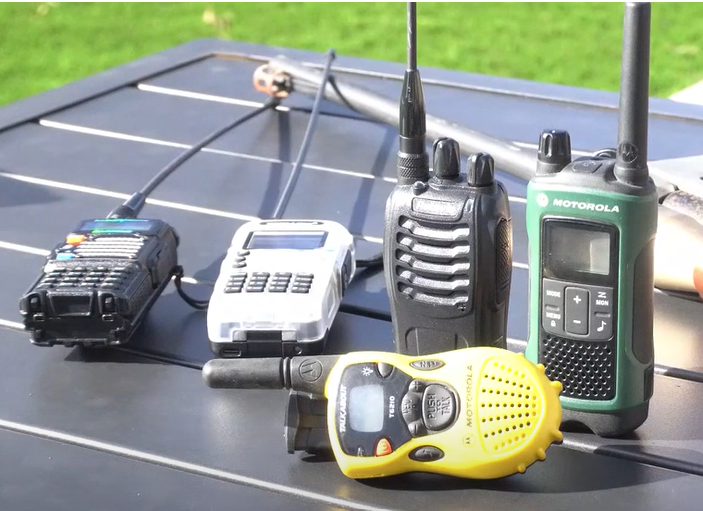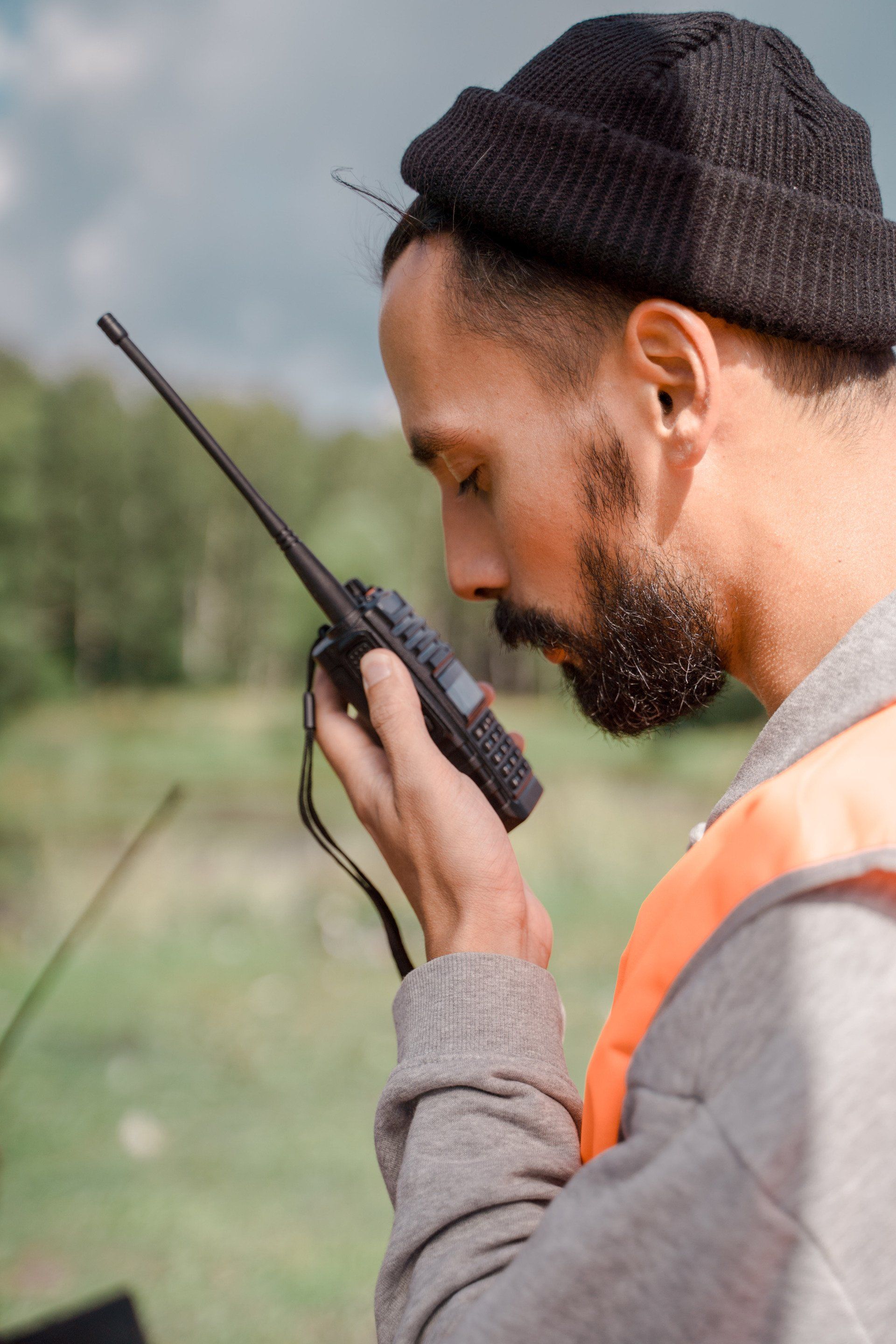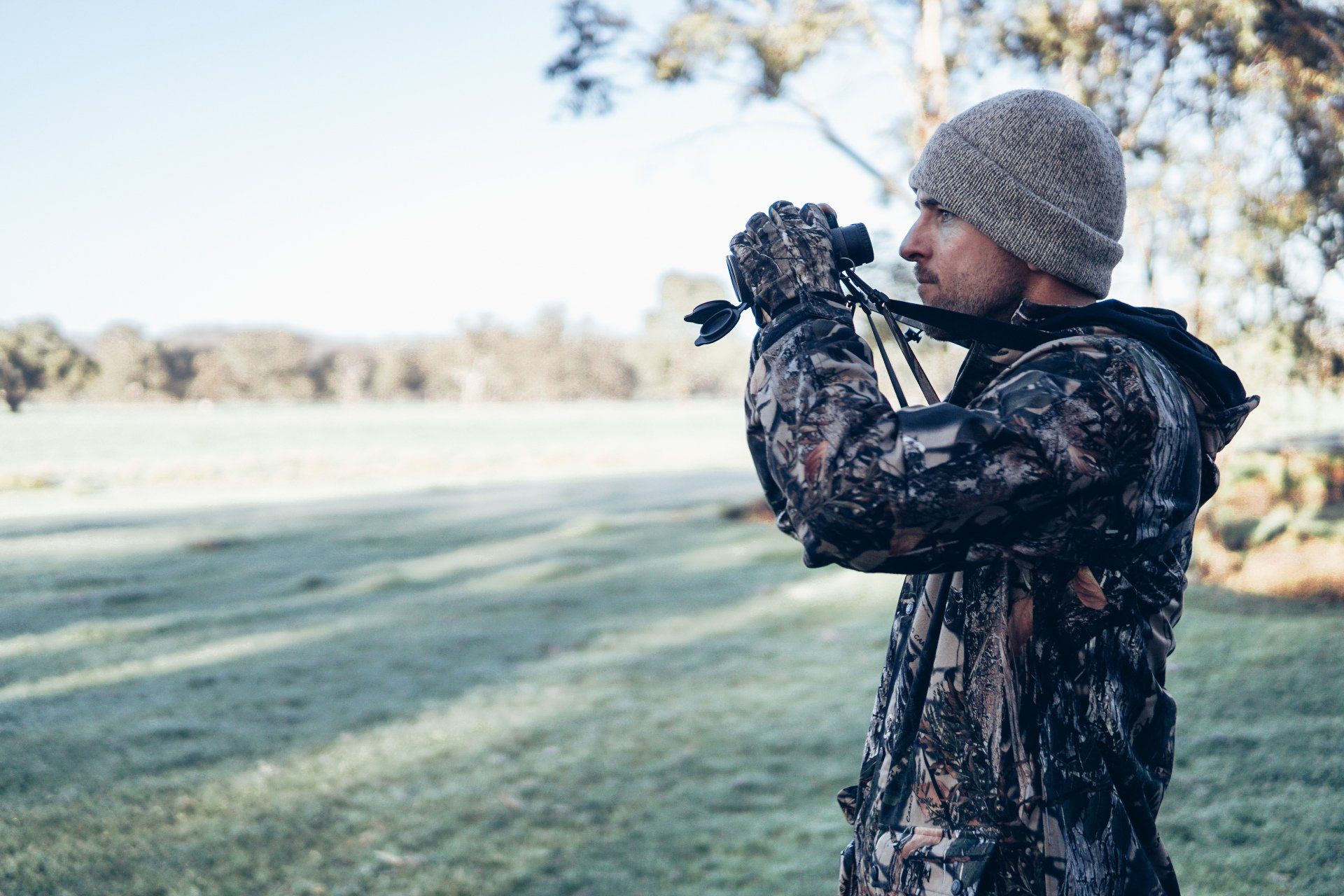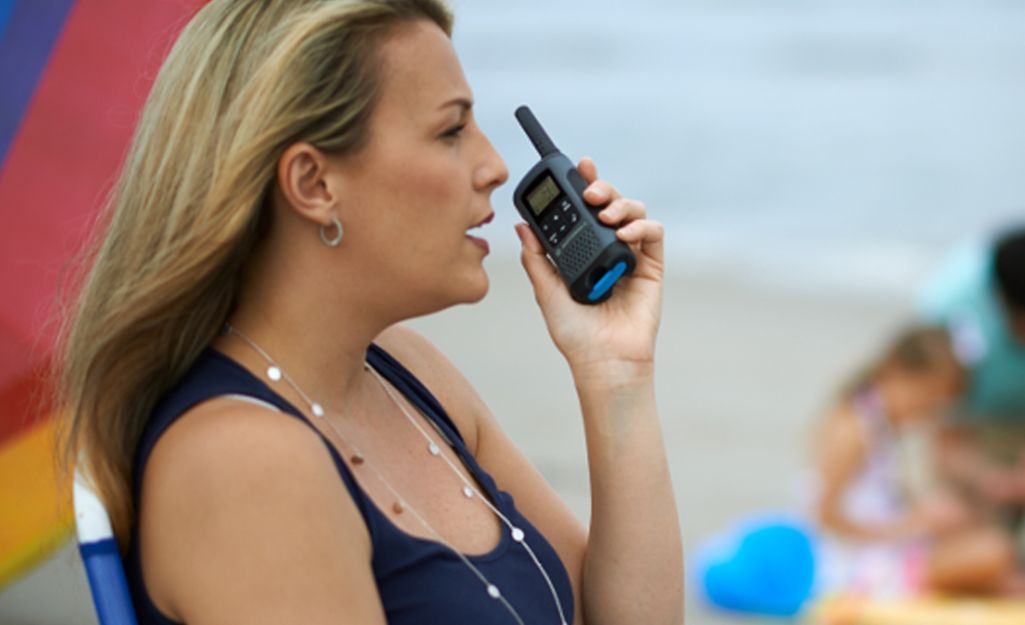Want to learn more about radio communication for the outdoors or emergency preparedness situations? Hopefully this guide can help clear the airwaves for you.
The Different Types of Radio Communication Modes and Applications
FRS, GMRS, CB, and Ham radio are all types of two-way radio communication systems. Each has its own unique features and intended use. Here's a brief explanation of the difference between them:
FRS (Family Radio Service)
FRS radios are low-power devices (0.5-2 Watts depending on frequency) intended for short-range communication between family members, friends, or small groups. They operate on 22 channels in the UHF (Ultra High Frequency) band, and do not require a license to use.
GMRS (General Mobile Radio Service)
GMRS radios are higher-powered (50 Watts max) than FRS radios and can transmit over longer distances. They operate on the same frequencies as FRS radios, but with more power and additional channels. A license is required to use GMRS frequencies at the full rated power output, which can be obtained from the FCC for a fee.
CB (Citizens Band)
CB radios operate on 40 channels in the HF (High Frequency) band. They are often used by truckers and other drivers to communicate with each other on the road. CB radios do not require a license to use but are limited to 4 watts of RF power and shorter range.
Ham Radio (Amateur Radio Service)
Ham radio is a hobby for amateur radio enthusiasts. It operates on a wide range of frequencies, including HF, VHF(Very High Frequency), and UHF. Ham radio operators can communicate with each other all over the world, and often use their radios for emergency communication during disasters. A license is required to use ham radio, which involves passing an exam to demonstrate knowledge of radio operating principles and regulations.
Generally, FRS and GMRS radios are intended for personal use, CB radios are used mainly for vehicle-to-vehicle communication, and ham radio is a hobby that can provide worldwide communication capabilities. All of these radios operate on different frequencies and with different levels of power, and some require a license to use.
Which type of radio best suits your needs? Lets take a deeper dive into each of the different use cases of these two-way communications and learn a bit more about their capabilities, as well as the pros and cons of each type.
FRS Radio Basics Explained
FRS (Family Radio Service) radio communications are a type of short-range radio communication that is primarily used for personal or recreational activities. It is a two-way communication system that operates on a set of designated channels within the UHF (Ultra High Frequency) band. FRS radios are small, lightweight, and inexpensive, making them a popular choice for outdoor activities such as hiking, camping, and hunting.
One of the most common use cases for FRS radio communications is for family and group outings. FRS radios allow families and groups to stay in contact with each other while engaging in outdoor activities. This is especially useful in areas with poor cellular reception, where cell phones may not work reliably. For example, when hiking or camping in a remote area, FRS radios can be used to stay in touch with other members of the group, coordinate activities, or call for help in case of an emergency.
FRS radios are also commonly used by hunters and fishermen. Hunters can use FRS radios to communicate with other members of their hunting party, coordinate their movements, and alert each other to potential hazards. Fishermen can use FRS radios to stay in touch with each other while out on the water, coordinate their movements, and share information about fishing conditions.
FRS (Family Radio Service) radios have several disadvantages compared to GMRS (General Mobile Radio Service) and CB (Citizens Band) radios, which may make them less suitable for certain applications. Also, since FRS Radios are mostly handheld units, they aren't well-suited for vehicle-to-vehicle communication since the antenna is attached to the radio, and doesn't protrude outside the vehicle.
One of the main disadvantages of FRS radios is their limited power and range. FRS radios are limited to 0.5-2 watts of power, which limits their range to a few hundred feet to a mile, depending on the terrain and other factors. In contrast, GMRS radios can transmit up to several miles or more, depending on the terrain, and CB radios can transmit up to several miles under ideal conditions.
Additionally, FRS radios are less durable than GMRS and CB radios. FRS radios are typically designed for consumer use and may not be as rugged or durable as GMRS or CB radios, which are often used in commercial or industrial settings.
Finally, FRS radios are less secure than GMRS radios. While FRS radios may offer privacy codes, these codes are limited and may not offer the same level of security as the encryption features found on some GMRS radios.
In summary, FRS radios have limited power and range, limited channels, may be less durable, and are less secure than GMRS and CB radios. While FRS radios may be suitable for some applications, such as short-range communication among family members or small groups, they may not be the best option for all users, especially those who need a more powerful and secure communication device.
**FCC Part 95 Regulations currently only permits FRS frequency transmissions while using Part 95 approved radio transceivers.
GMRS Radio Basics Explained
GMRS (General Mobile Radio Service) radios are a type of two-way radio communication that operates on a set of designated channels within the UHF (Ultra High Frequency) band. GMRS radios are similar to FRS (Family Radio Service) radios, but they have more power and range, allowing them to be used for a wider range of applications.
One of the primary use cases for GMRS radio is for outdoor activities such as hiking, camping, hunting, and boating. GMRS radios offer greater range than FRS radios, which makes them more suitable for outdoor activities that cover a larger area. For example, hunters can use GMRS radios to communicate with other members of their hunting party over a greater distance, and boaters can use GMRS radios to stay in contact with other boats in the vicinity.
The main advantage of GMRS radios is their greater power and range, which makes them suitable for a wider range of applications than FRS radios. They also typically have more features and are more durable than FRS radios. GMRS radios also offer privacy codes, which allow users to block out unwanted transmissions from other users who are on the same channel. They also are capable of operating on what's known as a duplex repeater, which can drastically increase the range that one can cover. This comes in very handy for emergency situations.
One of the main disadvantages of GMRS radios is that they require a license from the Federal Communications Commission (FCC) to operate legally. While obtaining a GMRS license is relatively easy and inexpensive, it may be a barrier to entry for some users who prefer the more accessible and license-free FRS or CB radios.
Additionally, GMRS radios are generally more expensive than FRS and CB radios. While the cost of GMRS radios has come down in recent years, they still tend to be more expensive than their FRS and CB counterparts, which may be a consideration for budget-conscious users.
In summary, GMRS radios require a license, are generally larger and heavier than FRS and CB radios, may be more expensive, and may be subject to more interference. While GMRS radios offer more power, range, and channels than FRS and CB radios, they may not be the best option for all users, especially those who prioritize portability, affordability, and accessibility.
**GMRS also fall under the FCC Part 95 Rule noted for FRS Radios
CB Radio Basics Explained
CB (Citizens Band) radio is a type of two-way radio communication that operates on a set of designated channels within the HF (High Frequency) band. CB radios have been in use since the 1940s and are still used today for a variety of applications for local communications.
One of the primary use cases for CB radio is in the trucking industry. CB radios are commonly used by truck drivers to communicate with each other about traffic conditions, road hazards, and other issues related to driving. CB radios can also be used by other drivers, such as RV owners and long-haul travelers, to communicate with each other while on the road. CB Radios are also often used by off-roading groups for vehicle-to-vehicle communications during their off-roading excursions.
CB radios are also used in emergency "on-the-road" situations where cell coverage may be compromised. CB radios are also used by amateur radio operators and hobbyists who enjoy using them for long-distance communication.
The main advantage of CB radios is their longer-range communication capabilities due to lower frequency and 4 Watt output limit, making them useful for communication in more remote areas or for long-distance travel. CB radios are also relatively inexpensive and easy to use, which makes them accessible to a wide range of users. CB Radio is arguably still the go-to for vehicle-to-vehicle communications and local traffic & road condition info.
Compared to FRS (Family Radio Service) and GMRS (General Mobile Radio Service) radios, CB (Citizens Band) radios have several disadvantages that may make them less desirable for some users.
A main disadvantage of CB radios is their larger size and weight. CB radios are typically larger and heavier than FRS and GMRS radios, which can make them less portable and more difficult to use for outdoor activities or on-the-go communication.
CB radios also have a limited range compared to GMRS radios. While CB radios can transmit over long distances under ideal conditions, their range is typically limited to fewer miles than GMRS.
Additionally, CB radios are less secure than FRS and GMRS radios. CB radio transmissions can be easily intercepted by other users, which can compromise privacy and security.
In summary, CB radios have limited channels, are larger and heavier than FRS and GMRS radios, have a limited range, and are less secure. While CB radios have some advantages, such as their long-range communication capabilities, they may not be the best option for all users, especially those who need a more portable and secure communication device.
Ham Radio Basics Explained
Ham radio, also known as amateur radio, is a type of radio communication that is used by hobbyists and enthusiasts. Ham radio is unique in that it allows users to communicate over long distances, often without the use of traditional communication infrastructure such as phone lines or the internet.
While many ham radio transceivers are handheld aka "HT" radios, there are also mobile radios for vehicle or marine installations, as well as larger units meant to be installed in stationary base station environments. For the sake of this article, we'll be mostly talking about handheld (HT) units.
While one of the main advantages of ham radio is its ability to communicate over long distances, generally HT radios operate in the same VHF/UHF radio frequencies as FRS and GMRS radios, meaning they are mostly a line-of-sight mode of communication. The difference is, the maximum power output, as well as the available frequencies for use.
Instead of preselected "channels," ham radio operators with at least the minimum licensing have entire swaths of frequencies available for use, and operate on higher power output, enabling them to more easily reach further distance from radio-to-radio (simplex) and have more options available for duplex repeaters nearby which can massively increase coverage area.
Another advantage of ham radio is its versatility. Ham radio users can communicate using a wide range of modes and frequencies, including voice, data, and digital modes. Ham radio operators can also experiment with different antennas and equipment to optimize their communications.
Ham radio is also useful in emergency situations. During natural disasters or other emergencies, traditional communication infrastructure may be damaged or unavailable, making ham radio a valuable tool for emergency communication. Ham radio operators can also provide communications support to emergency responders and other organizations during emergencies.
While ham radio offers unique advantages, it also has some disadvantages when compared to other types of radio communication, such as CB radio, FRS, and GMRS radios.
One of the main disadvantages of ham radio is its complexity. Ham radio requires a significant amount of knowledge and technical expertise, and users must obtain a license from the FCC to operate legally. Additionally, ham radio equipment can be expensive and requires a significant investment in time and resources. Ham radio equipment can be costly, especially for users who want to invest in high-quality equipment.
In summary, ham radio requires a license, technical expertise, and a significant investment in equipment, which can be a barrier to entry for some users. Ham radio is also more expensive than other types of radio communication and has a(n arguably) smaller user base. While ham radio offers unique advantages, it may not be the best option for all use cases.
How to Choose the Right Radio for You
If you haven't figured out which type of HT radio is right for your needs by reading this article, perhaps try inquiring with other participants in the type of activities you're interested in pursuing.
For instance, maybe you're interested in mountaineering... I'm sure there's a preferred type of radio communication used universally by mountaineering enthusiasts, perhaps even a specific model, and that's what you should get.
In comparison, if you're looking for simple walkie talkies to use on camping trips or hunting trips maybe 2-3 times a year, by all means some decent quality FRS radios will serve you well with low cost and simple operation.
Another interesting point is regarding the FCC Part 95 and Part 97 Rule. Essentially the FCC says that FRS and GMRS radios are for PRS, or personal radio service, whereas ham radios are for amateur radio. What does this mean?
It means that these radios require different FCC approvals, and cannot carry both, meaning even though it is possible to transmit on FRS and GMRS frequencies with a (part 97) ham radio, you cannot legally do so since that radio does not carry part 95 approval.
Yes, even if you have both a ham radio license AND an GMRS license, you can't use a (part 97) ham radio on GMRS OR FRS frequencies. Seems kinda silly to me. Also, how does one know what type of radio a transmission originates from? There isn't really a way to know as far as I'm aware. Do with that information as you see fit.
I bring up that point for a couple reasons. One is that, the various groups of radio enthusiasts contain some pretty interesting characters, some of whom will be quick to make a huge issue out of not following every single letter of the law. While I don't condone breaking the law, I'm also not going super-karen over any little discrepancies here or there.
The other reason is, it may be that final deciding factor, knowing you "legally" must commit to either a PRS Part 95 Radio or a Part 97 ham radio to use VHF/UHF frequencies (or channels).
If you're looking for more specific information about radios for
emergency preparedness reasons, check out the video below.
Never hesitate to reach out to me through the contact form here if you have any questions about two-way radios!






